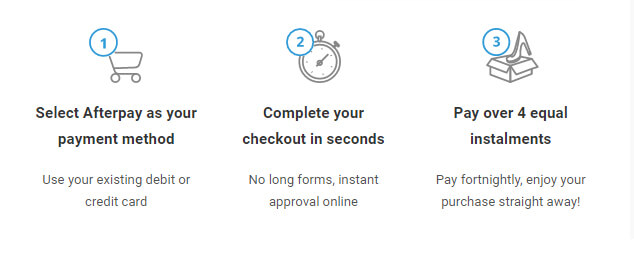Addressing Dog Behavior Problems: Enhancing Family Life and Strengthening Community Bonds

Written by Lalit Kumar
Addressing Dog Behavior Problems: Enhancing Family Life and Strengthening Community Bonds
Dogs are beloved members of the family, and their behavior significantly affects not just the household but the community at large. While dogs bring immense joy, they may also display behavioral issues such as barking, aggression, or separation anxiety, which can create tension within the home and with neighbors. The good news is that with proper understanding and management, these challenges can be resolved. In this article, we will look at common dog behavior problems and offer effective solutions to create a more harmonious environment in your home and community.
Common Dog Behavior Issues
Before exploring ways to address these challenges, let's first identify some of the most common behavioral problems encountered by dog owners:
- Excessive Barking: Dogs may bark excessively to alert you to intruders, respond to other animals, or simply out of boredom. This can lead to disruptions within your home or in the neighborhood.
- Aggression: Aggressive behavior, including growling, snapping, or biting, can create serious safety concerns. Fear, territorial instincts, or insufficient socialization can be triggers.
- Separation Anxiety: Dogs with separation anxiety often become distressed when left alone, leading to destructive behaviors such as chewing on furniture, tearing up belongings, or loud crying.
- Destructive Chewing: Dogs chew as a way to relieve stress, boredom, or discomfort from teething. If left unchecked, this behavior can cause significant damage to household items.
- Jumping on People: While often a sign of excitement, dogs that jump on people may overwhelm others, especially children and guests, and may be perceived as impolite or aggressive.
- Fear-Based Behaviors: Dogs that are fearful may hide, cower, or act aggressively when they encounter loud noises, new environments, or unfamiliar individuals.
Understanding the Root Causes of Behavior Problems
To address behavior issues effectively, it's important to understand what might be causing them. Dogs, like humans, have emotional and physical needs, and unmet needs or negative experiences can lead to undesirable behavior. Common causes include:
- Insufficient Socialization: Dogs that aren't exposed to different people, animals, and settings may develop fears or aggressive tendencies toward the unknown.
- Lack of Exercise: When dogs don't receive enough physical activity, they can become restless, leading to destructive behavior or hyperactivity.
- Poor Training: Without proper guidance, dogs may not understand household rules, causing confusion and misbehavior.
- Health Problems: Behavioral changes can sometimes be the result of underlying health issues, making it essential to consult a veterinarian if needed.
Solutions for a More Harmonious Home and Community
Now that we understand the potential causes of behavioral problems, let's explore practical strategies to address them, promoting a healthier relationship with your dog and a more peaceful community.
- Consistent Training: Consistency is key to modifying dog behavior. Establish clear rules and routines, and make sure all family members are on the same page. For example, decide on specific areas where your dog is allowed and enforce those boundaries. Reward good behavior with praise or treats, and use gentle redirection to address undesirable actions. Regular training sessions, whether at home or in classes, can help curb issues such as barking, jumping, and basic obedience. Positive reinforcement encourages long-lasting behavioral changes.
- Adequate Exercise and Mental Stimulation: Boredom and excess energy are often at the root of behavioral problems. Ensure your dog gets daily physical activity through regular walks or runs, which also provide mental stimulation as they encounter new sights and smells. Interactive toys, puzzle games, and play activities like fetch or tug-of-war can keep your dog mentally and physically engaged. A tired dog is a happy dog, and regular exercise can significantly reduce undesirable behaviors linked to boredom or energy buildup.
- Socialization: Early and ongoing socialization helps prevent fear-based behaviors and aggression. Gradually expose your dog to different people, environments, and other animals to help them become well-adjusted and confident. For puppies, enrolling in a socialization class can offer controlled exposure to new experiences, while adult dogs benefit from gradual introductions to new situations. Reward calm behavior during these exposures to reinforce positive associations. A well-socialized dog is less likely to exhibit fearful or aggressive behaviors.
- Managing Aggression and Fear: Aggression or extreme fear often requires professional intervention. If your dog is displaying aggressive or fearful behaviors, it's advisable to consult a professional trainer. Techniques such as desensitization and counter-conditioning can help. Desensitization involves gradually introducing your dog to the source of their fear at a distance, while counter-conditioning pairs the fearful experience with something positive, such as treats. Avoid punishment, as it may worsen the issue. Early intervention is crucial to prevent these behaviors from escalating.
- Using a Dog Training Collar: For dogs with issues such as excessive barking, jumping, or leash pulling, a dog training collar can be a helpful tool. These collars typically provide a mild corrective stimulus, like a vibration or tone, which can interrupt undesirable behavior and help redirect the dog's attention. When used correctly and in conjunction with other training methods, a training collar can be an effective way to reinforce good behavior. However, it's essential to use the collar under the guidance of a professional to ensure it's used safely and effectively, avoiding any risk of harm or distress to the dog.
- Seeking Professional Help: In some situations, it's best to seek the guidance of a professional dog trainer or behaviorist. These experts can evaluate your dog's specific challenges and provide customized solutions. They can be especially helpful for addressing complex issues such as separation anxiety, severe aggression, or other persistent behavior problems.
Strengthening Community Connections
When dogs behave appropriately, it fosters a safer and more pleasant community for everyone. Excessive barking, aggression, and other disruptions can create tension between neighbors and affect the overall quality of life. By resolving these issues and promoting good behavior in your dog, you contribute to a more harmonious environment. Moreover, being a responsible pet owner by providing proper training, socialization, and managing behaviour sets a positive example for others and encourages a dog-friendly community culture.
Resolving dog behavior problems is not just about improving life at home; it's about contributing to a more peaceful and respectful environment in your community. By understanding the causes behind common behavior issues and implementing strategies such as consistent training, socialization, and exercise, you can strengthen your bond with your dog while fostering a safer, happier neighborhood. Remember, patience, consistency, and seeking professional assistance when needed are key to helping your dog succeed and ensuring a harmonious home and community.
 The Dogline
The Dogline
















